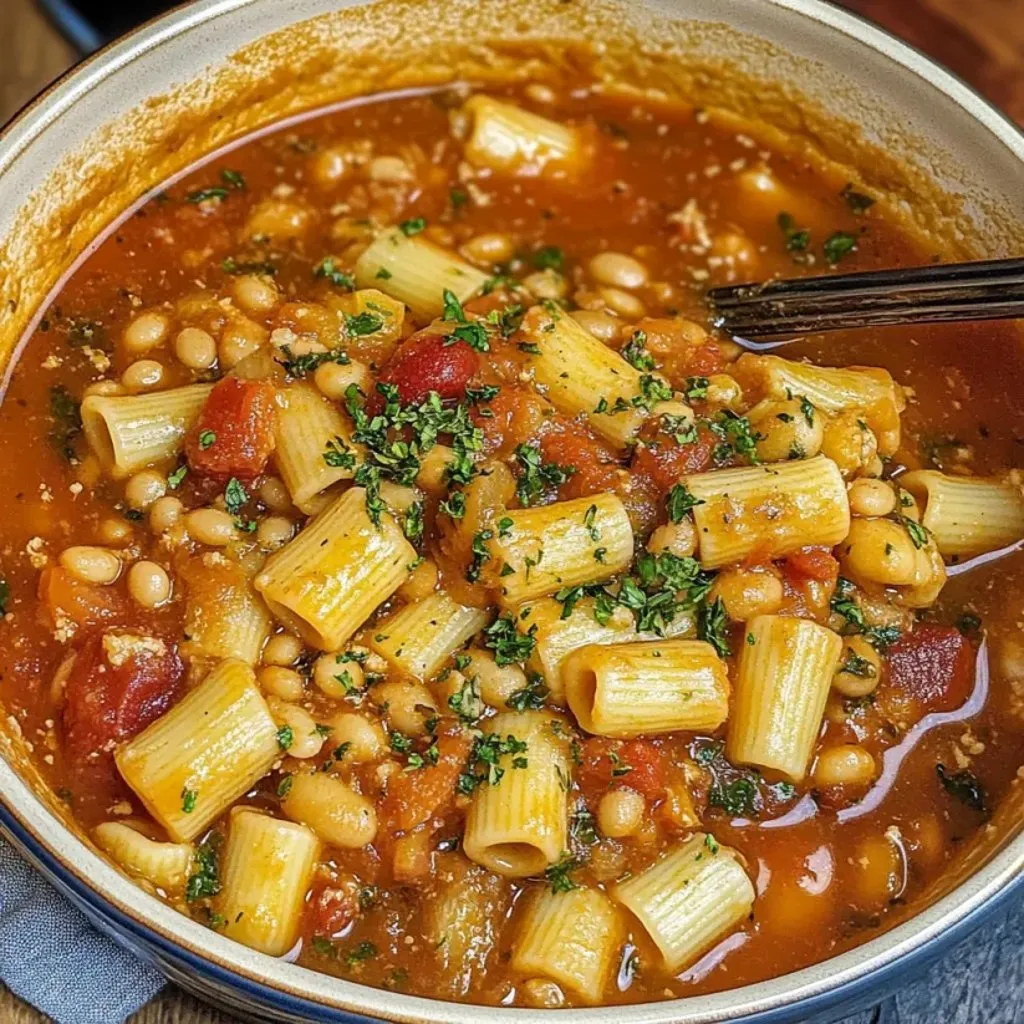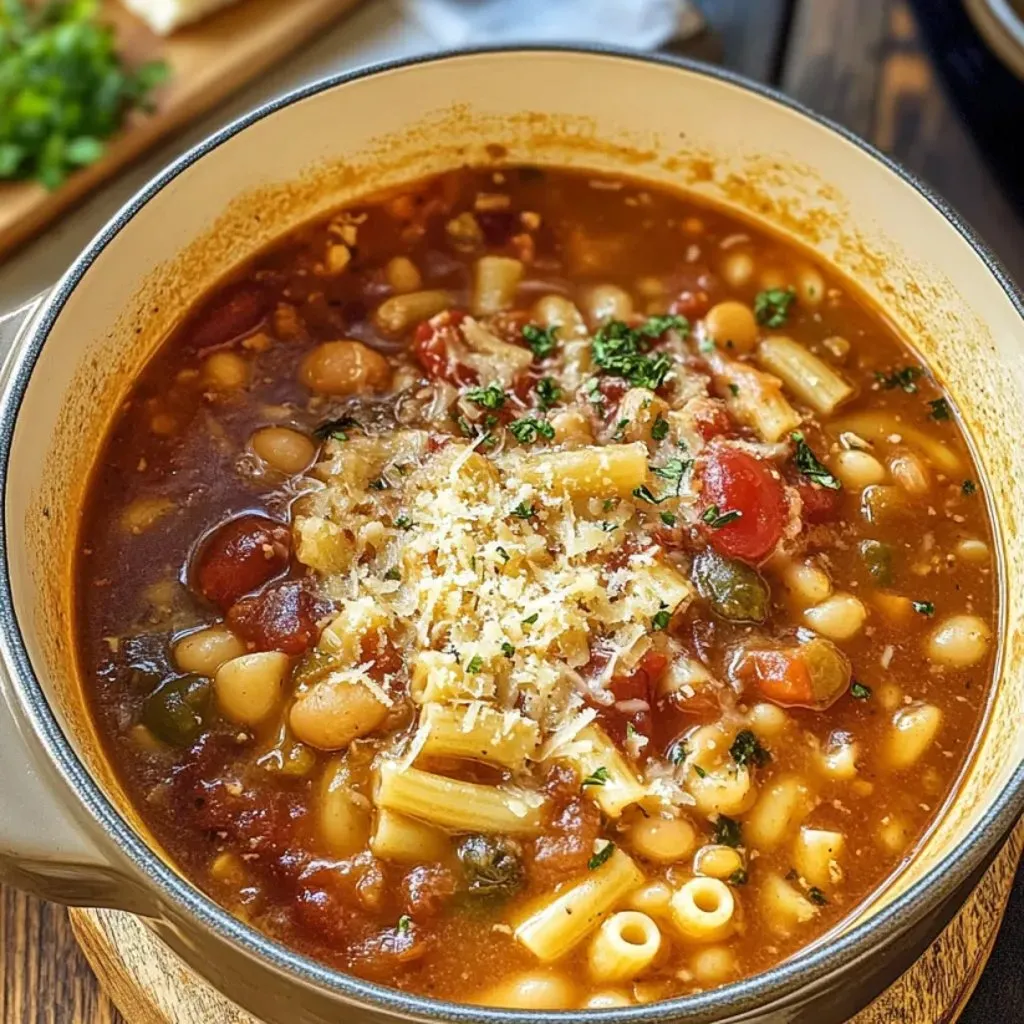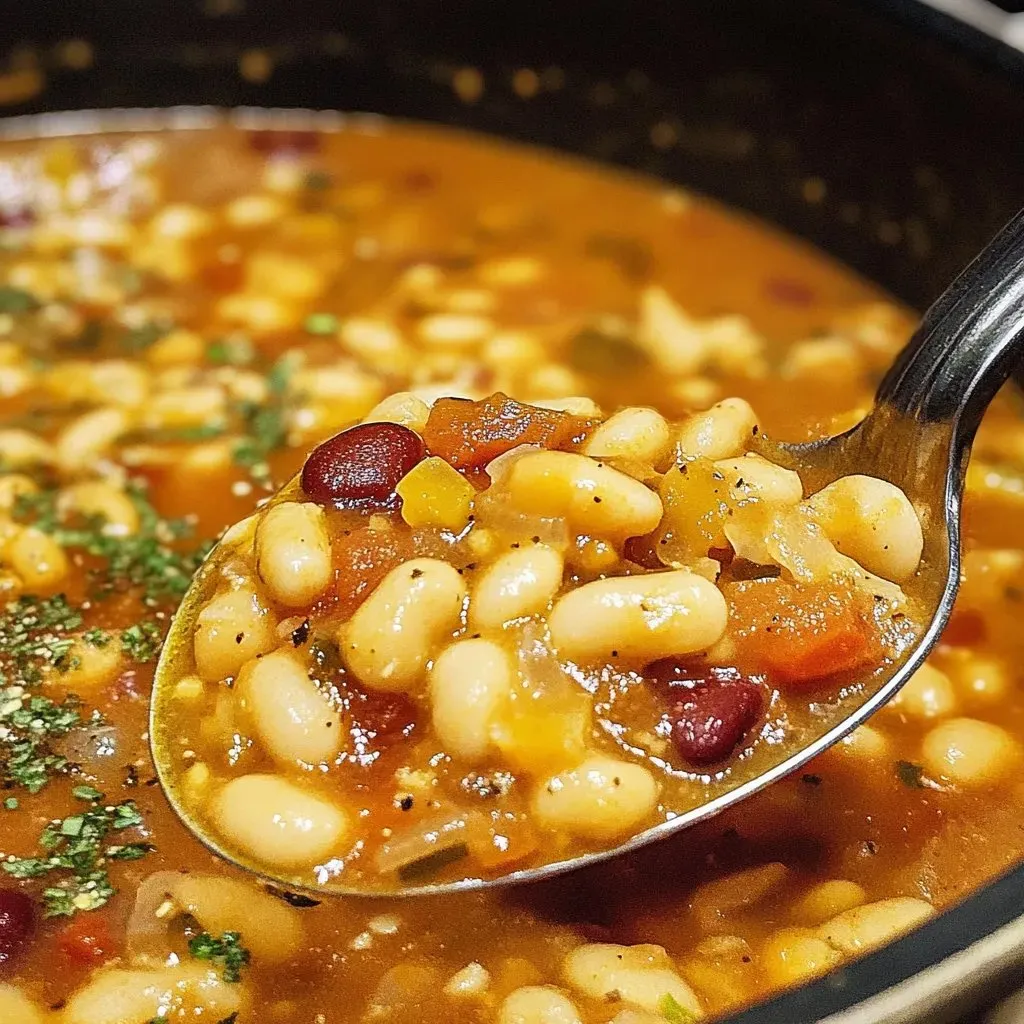 Save
Save
This hearty Pasta e Fagioli has been warming Italian households for generations, combining the comforting duo of tender pasta and creamy beans in a rich, flavorful broth. As a traditional peasant dish, it transforms humble pantry staples into something extraordinary that perfectly balances heartiness and nutrition in one steaming bowl.
I first discovered this recipe during my culinary journey through northern Italy, where a grandmother in a small village shared her family's version that had been passed down for four generations. Ever since bringing it home, it's become my go-to dish when friends gather at my table on chilly evenings.
Ingredients
- Olive oil creates the foundation for building flavors choose a good quality extra virgin for best results
- Onion garlic carrots and celery form the aromatic base called soffritto in Italian cooking use fresh firm vegetables
- Optional bacon adds a wonderful smoky depth that complements the beans beautifully
- Diced tomatoes provide acidity and richness choose San Marzano for authentic Italian flavor
- Chicken broth forms the soup base homemade is best but low-sodium store bought works well
- Cannellini and kidney beans offer creamy texture and protein look for beans that hold their shape
- Dried herbs oregano and basil infuse the broth with classic Italian flavors
- Small pasta like ditalini is traditional as it cooks perfectly within the soup
- Parmesan cheese adds umami richness freshly grated is significantly better than pre-packaged
Step-by-Step Instructions
- Build the Flavor Base
- Heat olive oil in a large Dutch oven over medium heat then add your diced onion garlic carrots and celery. Cook for a full 5-7 minutes until vegetables soften and become fragrant. This patience in developing this flavor foundation is crucial as it creates the backbone of your soup.
- Add Bacon for Depth
- If using bacon which I highly recommend add the diced pieces to your softened vegetables. Cook for 3-4 minutes until the bacon becomes crispy and renders its fat. This step introduces a smoky complexity that elevates the entire dish from good to exceptional.
- Create the Broth
- Pour in diced tomatoes and chicken broth stirring thoroughly to integrate all flavors. Bring to a gentle boil allowing the acidity of the tomatoes to mellow and the flavors to begin melding together.
- Incorporate Beans and Seasonings
- Add both cannellini and kidney beans along with dried oregano basil red pepper flakes and the bouillon cube. Season with salt and pepper then reduce heat and simmer for at least 15 minutes. This slow cooking process is essential for the herbs to release their oils and the flavors to harmonize properly.
- Cook the Pasta
- Add ditalini pasta directly to the simmering soup and cook until al dente typically 8-10 minutes. Monitor the consistency as the pasta will absorb liquid adding more broth if needed. Cooking the pasta directly in the soup rather than separately allows it to absorb the flavorful broth.
- Finish and Garnish
- Ladle the hot soup into bowls and finish with freshly grated Parmesan cheese and chopped parsley. The heat from the soup slightly melts the cheese creating a wonderful texture contrast and adding rich umami notes to each spoonful.
 Save
Save
My absolute favorite element of this soup is the Parmesan rind trick I learned from an elderly woman in Tuscany. She insisted on dropping a leftover cheese rind into the simmering broth, explaining that this was the secret that transformed a simple soup into something transcendent. The first time I tried it myself, the difference was remarkable—creating a depth of flavor that had my dinner guests begging for the recipe.
Make-Ahead Magic
This soup actually improves with time as the flavors continue to develop. Make it a day ahead and refrigerate overnight for an even more delicious meal. The beans will continue to release their starch, creating a naturally thicker and more cohesive broth. If making ahead, consider cooking and storing the pasta separately to prevent it from absorbing too much liquid and becoming mushy.
Regional Variations
While my recipe represents a fairly classic version of Pasta e Fagioli, regional variations abound throughout Italy. In Veneto, the soup is often thicker and creamier, with some of the beans pureed to create a velvety consistency. In Naples, you might find it with more tomatoes and sometimes bits of pancetta instead of bacon. Some mountain regions add small amounts of rosemary or even a splash of white wine. Feel free to experiment with these variations to discover your own perfect version.
Perfect Pairings
Pasta e Fagioli is substantial enough to serve as a main course, especially when paired with crusty Italian bread rubbed with a cut garlic clove and drizzled with olive oil. For a complete meal, serve alongside a simple arugula salad dressed with lemon juice, olive oil, and shaved Parmesan. A glass of medium-bodied Sangiovese or Chianti complements the tomato base beautifully, while highlighting the earthiness of the beans.
 Save
Save
Recipe Questions
- → What does Pasta e Fagioli mean?
Pasta e Fagioli literally translates to "pasta and beans" in Italian. This name reflects the two main components of this traditional soup that has been a staple in Italian cuisine for generations.
- → Can I make Pasta e Fagioli ahead of time?
Yes, Pasta e Fagioli actually improves with time as flavors continue to develop. For best results, prepare the soup a day ahead but cook and add the pasta separately when reheating to prevent it from becoming too soft.
- → What's the best pasta shape to use?
Traditionally, small pasta shapes like ditalini, tubetti, or small elbow macaroni work best. These smaller shapes maintain the proper proportion of pasta to beans and broth, ensuring each spoonful has a balanced bite.
- → Is Pasta e Fagioli vegetarian?
While traditional versions often include bacon or pancetta for flavor, Pasta e Fagioli can easily be made vegetarian by omitting the meat and using vegetable broth instead of chicken broth. The beans provide plenty of protein and substance.
- → How can I thicken my Pasta e Fagioli?
For a thicker consistency, mash about one-third of the beans before adding them to the pot. This naturally thickens the soup without additional ingredients. You can also reduce the amount of broth or simmer the soup uncovered to allow some liquid to evaporate.
- → What's the secret to authentic Pasta e Fagioli flavor?
Adding a Parmesan cheese rind during simmering is a traditional technique that infuses the broth with rich, savory depth. Also, allowing time for flavors to meld is crucial - the soup tastes even better the next day.